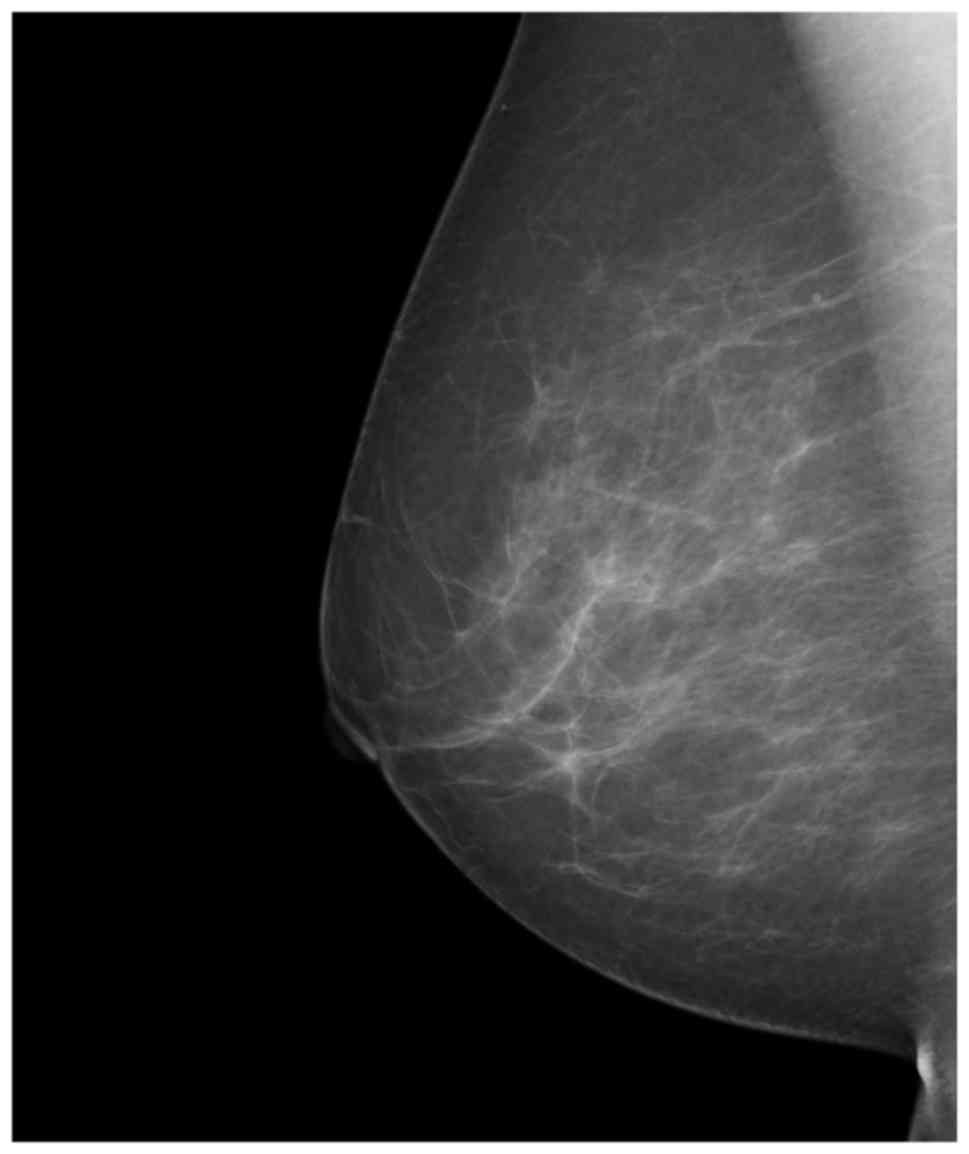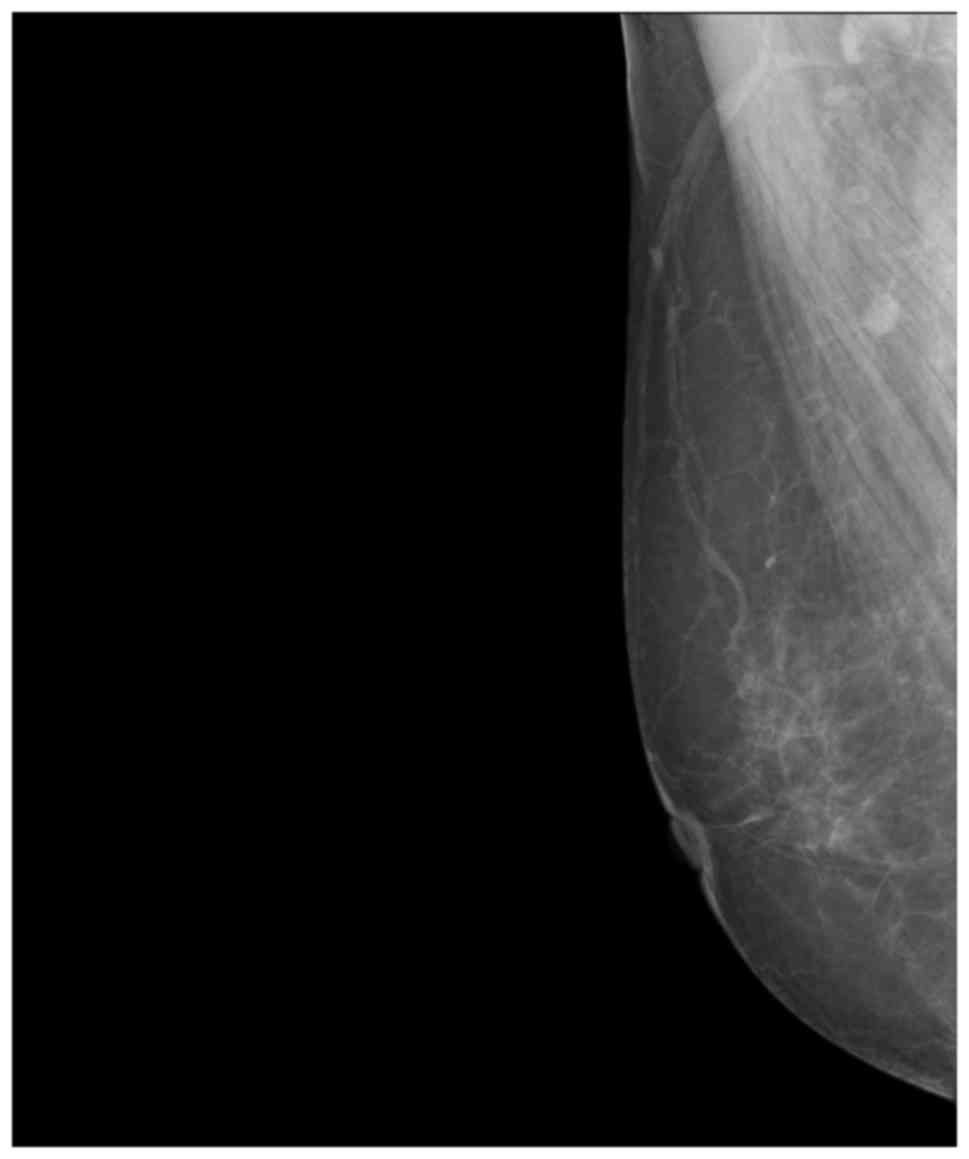|
1
|
DeSantis CE, Fedewa SA, Goding Sauer A,
Kramer JL, Smith RA and Jemal A: Breast cancer statistics, 2015:
Convergence of incidence rates between black and white women. CA
Cancer J Clin. 66:31–42. 2016. View Article : Google Scholar : PubMed/NCBI
|
|
2
|
Coughlin SS and Ekwueme DU: Breast cancer
as a global health concern. Cancer Epidemiol. 33:315–318. 2009.
View Article : Google Scholar : PubMed/NCBI
|
|
3
|
Li T, Mello-Thoms C and Brennan PC:
Descriptive epidemiology of breast cancer in China: incidence,
mortality, survival and prevalence. Breast Cancer Res Treat.
159:395–406. 2016. View Article : Google Scholar : PubMed/NCBI
|
|
4
|
Ghoncheh M, Pournamdar Z and Salehiniya H:
Incidence and mortality and epidemiology of breast cancer in the
world. Asian Pac J Cancer Prev 17 (S3). 43–46. 2016. View Article : Google Scholar
|
|
5
|
Han W and Kang SY; Korean Breast Cancer
Society, : Relationship between age at diagnosis and outcome of
premenopausal breast cancer: age less than 35 years is a reasonable
cut-off for defining young age-onset breast cancer. Breast Cancer
Res Treat. 119:193–200. 2010. View Article : Google Scholar : PubMed/NCBI
|
|
6
|
Ercan C, van Diest PJ and Vooijs M:
Mammary development and breast cancer: the role of stem cells. Curr
Mol Med. 11:270–285. 2011. View Article : Google Scholar : PubMed/NCBI
|
|
7
|
Collignon J, Lousberg L, Schroeder H and
Jerusalem G: Triple-negative breast cancer: treatment challenges
and solutions. Breast Cancer (Dove Med Press). 8:93–107.
2016.PubMed/NCBI
|
|
8
|
Miller KD, Siegel RL, Lin CC, Mariotto AB,
Kramer JL, Rowland JH, Stein KD, Alteri R and Jemal A: Cancer
treatment and survivorship statistics, 2016. CA Cancer J Clin.
66:271–289. 2016. View Article : Google Scholar : PubMed/NCBI
|
|
9
|
Welch HG, Prorok PC, O'Malley AJ and
Kramer BS: Breast-cancer tumor size, overdiagnosis, and mammography
screening effectiveness. N Engl J Med. 375:1438–1447. 2016.
View Article : Google Scholar : PubMed/NCBI
|
|
10
|
Ohuchi N, Suzuki A, Sobue T, Kawai M,
Yamamoto S, Zheng YF, Shiono YN, Saito H, Kuriyama S, Tohno E, et
al J-START investigator groups, : Sensitivity and specificity of
mammography and adjunctive ultrasonography to screen for breast
cancer in the Japan Strategic Anti-cancer Randomized Trial
(J-START): a randomised controlled trial. Lancet. 387:341–348.
2016. View Article : Google Scholar : PubMed/NCBI
|
|
11
|
McDonald ES, Oustimov A, Weinstein SP,
Synnestvedt MB, Schnall M and Conant EF: Effectiveness of digital
breast tomosynthesis compared with digital mammography: outcomes
analysis from 3 years of breast cancer screening. JAMA Oncol.
2:737–743. 2016. View Article : Google Scholar : PubMed/NCBI
|
|
12
|
Veronesi U, Boyle P, Goldhirsch A,
Orecchia R and Viale G: Breast cancer. Lancet. 365:1727–1741. 2005.
View Article : Google Scholar : PubMed/NCBI
|
|
13
|
Tadayyon H, Sadeghi-Naini A, Wirtzfeld L,
Wright FC and Czarnota G: Quantitative ultrasound characterization
of locally advanced breast cancer by estimation of its scatterer
properties. Med Phys. 41:0129032014. View Article : Google Scholar : PubMed/NCBI
|
|
14
|
Pfarl G and Helbich TH: Breast Imaging
Reporting and Data System (BI-RADS)-German version. Rofo.
174:921–926. 2002.(In German). PubMed/NCBI
|
|
15
|
Giuliano V and Giuliano C: Improved breast
cancer detection in asymptomatic women using 3D-automated breast
ultrasound in mammographically dense breasts. Clin Imaging.
37:480–486. 2013. View Article : Google Scholar : PubMed/NCBI
|
|
16
|
Olsen O and Gøtzsche PC: Screening for
breast cancer with mammography. Cochrane Database Syst Rev.
4:CD0018772001.
|
|
17
|
Oh CM, Won YJ, Jung KW, Kong HJ, Cho H,
Lee JK, Lee DH and Lee KH; Community of Population-Based Regional
Cancer Registries, : Cancer statistics in Korea: incidence,
mortality, survival, and prevalence in 2013. Cancer Res Treat.
48:436–450. 2016. View Article : Google Scholar : PubMed/NCBI
|
|
18
|
Poortmans PM, Collette S, Kirkove C, Van
Limbergen E, Budach V, Struikmans H, Collette L, Fourquet A,
Maingon P, Valli M, et al EORTC Radiation Oncology and Breast
Cancer Groups, : Internal mammary and medial mupraclavicular
irradiation in breast cancer. N Engl J Med. 373:317–327. 2015.
View Article : Google Scholar : PubMed/NCBI
|
|
19
|
Belani CP, Schreeder MT, Steis RG, Guidice
RA, Marsland TA, Butler EH and Ramalingam SS: Cetuximab in
combination with carboplatin and docetaxel for patients with
metastatic or advanced-stage nonsmall cell lung cancer: a
multicenter phase 2 study. Cancer. 113:2512–2517. 2008. View Article : Google Scholar : PubMed/NCBI
|
|
20
|
Bianchini G, Balko JM, Mayer IA, Sanders
ME and Gianni L: Triple-negative breast cancer: challenges and
opportunities of a heterogeneous disease. Nat Rev Clin Oncol.
13:674–690. 2016. View Article : Google Scholar : PubMed/NCBI
|
|
21
|
Dobrosavljević A, Rakić S, Nikoli B,
Raznatović SJ, Dikić SD, Milosević Z, Jurisić A and Skrobić M:
Diagnostic value of breast ultrasound in mammography BI-RADS 0 and
clinically indeterminate or suspicious of malignancy breast
lesions. Vojnosanit Pregl. 73:239–245. 2016. View Article : Google Scholar : PubMed/NCBI
|
|
22
|
Zhang H, Tan H, Gao J, Wei Y, Yu Z and
Zhou Y: The use of sequential X-ray, CT and MRI in the preoperative
evaluation of breast-conserving surgery. Exp Ther Med.
12:1275–1278. 2016. View Article : Google Scholar : PubMed/NCBI
|
|
23
|
Tsigginou A, Gkali C, Chalazonitis A,
Feida E, Vlachos DE, Zagouri F, Rellias I and Dimitrakakis C:
Adding the power of iodinated contrast media to the credibility of
mammography in breast cancer diagnosis. Br J Radiol.
89:201603972016. View Article : Google Scholar : PubMed/NCBI
|
|
24
|
Bae S, Yoon JH, Moon HJ, Kim MJ and Kim
EK: Breast microcalcifications: diagnostic outcomes according to
image-guided biopsy method. Korean J Radiol. 16:996–1005. 2015.
View Article : Google Scholar : PubMed/NCBI
|
|
25
|
Chen HL, Zhou MQ, Tian W, Meng KX and He
HF: Effect of age on breast cancer patient prognoses: a
population-based study using the SEER 18 database. PLoS One.
11:e01654092016. View Article : Google Scholar : PubMed/NCBI
|
|
26
|
Mullooly M, Yang HP, Falk RT, Nyante SJ,
Cora R, Pfeiffer RM, Radisky DC, Visscher DW, Hartmann LC, Carter
JM, et al: Relationship between crown-like structures and
sex-steroid hormones in breast adipose tissue and serum among
postmenopausal breast cancer patients. Breast Cancer Res. 19:82017.
View Article : Google Scholar : PubMed/NCBI
|
|
27
|
Jeon SY, Hwang KA and Choi KC: Effect of
steroid hormones, estrogen and progesterone, on epithelial
mesenchymal transition in ovarian cancer development. J Steroid
Biochem Mol Biol. 158:1–8. 2016. View Article : Google Scholar : PubMed/NCBI
|











